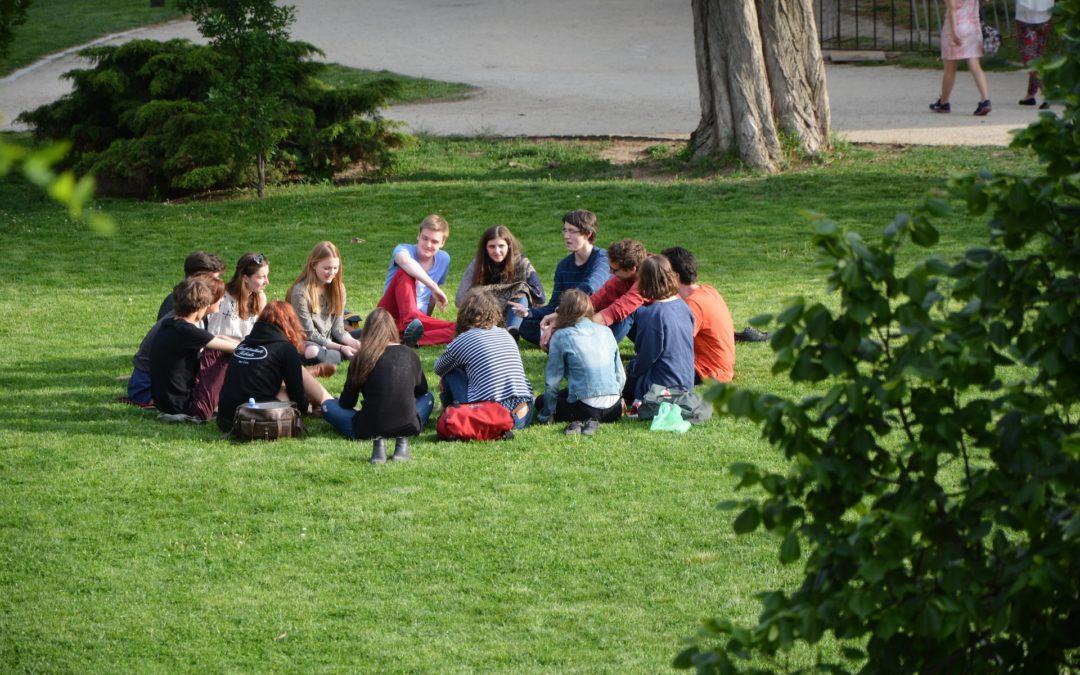In an era marked by diversity and interconnectedness, the concept of social cohesion stands as a cornerstone for the prosperity and well-being of communities. Social cohesion reflects the degree of solidarity and mutual support within a society, emphasizing the importance of shared values, cooperation, and a sense of belonging.
To explore the practical manifestations of this crucial element, we delve into a compilation of 20 exemplary examples where social cohesion thrives. From community gardens that cultivate a sense of collective responsibility to disaster response teams showcasing the strength of unified action, these examples showcase the diverse ways in which social cohesion manifests, enriching the fabric of societies and fostering environments where individuals thrive together. Join us on a journey through these inspiring instances that highlight the significance of social cohesion in creating resilient, harmonious, and interconnected communities.
What is Social Cohesion?
Social cohesion refers to the interconnectedness, solidarity, and harmony within a society, where individuals coexist peacefully, fostering a sense of belonging and mutual support. It encompasses the shared values, norms, and bonds that unite diverse communities, promoting inclusivity and collaboration. Strong social cohesion enhances resilience, reduces conflicts, and promotes a sense of collective identity, leading to a more stable and prosperous society. Achieving and maintaining social cohesion relies on factors such as equitable opportunities, effective communication, inclusive policies, and fostering trust among individuals and groups.
Factors that contribute to social cohesion include equitable access to resources such as education, healthcare, and employment opportunities. Additionally, a fair justice system, political stability, and cultural acceptance of diversity play pivotal roles in strengthening social bonds.
The outcomes of robust social cohesion manifest in various ways, including higher levels of civic engagement, greater community resilience in times of adversity, and improved overall well-being for individuals. Moreover, cohesive societies often experience lower crime rates, better economic growth, and increased social mobility for all members, regardless of background or status.
Successful efforts to promote social cohesion involve fostering a sense of belonging and social inclusion for marginalized groups, encouraging dialogue and understanding among different communities, and addressing systemic inequalities. Ultimately, nurturing social cohesion is a continual process that requires commitment from individuals, communities, and policymakers to create a more unified and harmonious society.
The Best Social Cohesion Examples
1. Community Gardens
Community gardens are more than just plots of land where people grow vegetables; they serve as communal spaces that bring individuals together. In these gardens, people from diverse backgrounds collaborate to cultivate and share produce. The act of collectively tending to the garden fosters a sense of shared responsibility for the well-being of the community. Beyond the literal fruits and vegetables, these gardens cultivate a metaphorical harvest of camaraderie and cooperation.
2. Neighborhood Watch Programs
Neighborhood Watch Programs are community-driven initiatives designed to enhance safety and security. By encouraging residents to actively participate in safeguarding their neighborhoods, these programs create a shared commitment to crime prevention. Through regular communication and collaborative efforts, neighbors become more than just passive inhabitants; they become active guardians, fostering a safer environment and a stronger sense of communal trust.
3. Cultural Festivals
Cultural festivals serve as vibrant showcases of diversity, providing platforms for communities to celebrate their differences. By actively participating in these events, individuals gain a deeper understanding of various cultures, fostering a sense of unity. These festivals become melting pots of traditions, art, and cuisine, breaking down barriers and creating a shared appreciation for the richness that diversity brings to a community.
4. Volunteer Organizations
Joining volunteer organizations is a powerful way for individuals to connect with one another while simultaneously contributing to the greater good. Whether it’s working at a local food bank, participating in environmental initiatives, or assisting in community projects, volunteers share a common goal of making a positive impact. The bonds formed through these shared experiences create a network of individuals dedicated to the betterment of society, emphasizing the importance of collective action.
5. Sports Teams and Clubs
Team sports extend beyond the field or court; they build a sense of camaraderie and belonging among players and fans alike. Being part of a sports team fosters teamwork, mutual support, and a shared sense of purpose. Fans, in turn, find common ground in their support for the team, creating a community that transcends individual differences through the shared passion for the sport.
6. Religious and Spiritual Gatherings
Religious institutions play a multifaceted role in promoting social cohesion. Beyond their spiritual functions, they often serve as hubs for social interaction, support, and community service. Through religious gatherings, individuals come together to share in rituals, celebrate milestones, and engage in acts of charity, reinforcing a sense of interconnectedness and shared values.
7. Community Centers
Community centers act as dynamic hubs that offer spaces for people to gather, share resources, and participate in various activities. From educational workshops to social events, these centers become focal points for community engagement. The diverse range of activities accommodates different interests, encouraging interaction and collaboration among residents, thereby nurturing a sense of community identity.
8. Shared Public Spaces
Public spaces like parks, libraries, and recreational areas serve as communal meeting points where social interactions naturally occur. These spaces encourage people to come together, fostering a sense of community through shared experiences. Whether it’s a weekend picnic in the park or a study session in the library, these spaces provide the backdrop for the building of social connections.
9. Online Support Groups
In the digital age, online support groups have emerged as valuable platforms for individuals facing similar challenges to connect and support each other. These virtual communities transcend geographical boundaries, creating a shared space for empathy and understanding. The anonymity of online platforms often facilitates open and honest discussions, allowing individuals to form meaningful connections despite physical distance.
10. Multicultural Events
Multicultural events, such as festivals celebrating diversity, actively promote a sense of inclusion and shared identity. By showcasing the traditions, art, music, and cuisine of different cultures, these events create opportunities for cross-cultural understanding. Attendees are not merely spectators; they become participants in a collective celebration of the mosaic of cultures that enrich the community, reinforcing the importance of embracing diversity as a unifying force.
11. Public Art Installations
Public art installations go beyond mere aesthetics; they have the transformative power to bring people together. By creating a shared visual experience, art sparks conversations and reflections, breaking down barriers and fostering connections. Whether it’s a mural, sculpture, or interactive exhibit, public art invites individuals to engage with their surroundings and each other, contributing to the formation of a shared cultural identity within the community.
12. Community Clean-Up Initiatives
Community clean-up initiatives are more than just efforts to beautify the local environment; they are powerful tools for building community bonds and instilling a sense of pride. When residents actively participate in improving their surroundings, it creates a tangible connection to the community. The collaborative act of cleaning and beautifying public spaces reinforces the idea that everyone plays a role in maintaining a healthy and vibrant community.
13. Educational Programs
Educational programs, including workshops and classes, serve as platforms for shared learning experiences. When individuals come together to acquire new knowledge or skills, a sense of unity is cultivated. These programs not only facilitate personal growth but also create a collective identity among participants who share the journey of intellectual and skill development.
14. Interfaith Dialogue
Interfaith dialogue is a crucial mechanism for fostering understanding and cooperation among individuals from different religious backgrounds. By encouraging open conversations and mutual respect, interfaith dialogue breaks down misconceptions and promotes shared values. This not only strengthens the social fabric but also contributes to a more harmonious coexistence within the community.
15. Community Markets
Local markets are more than just economic hubs; they provide opportunities for residents to support local businesses and connect with neighbors. The act of buying and selling in a communal space fosters a sense of shared economic well-being. Additionally, the social interactions that occur at these markets contribute to the formation of a tight-knit community where individuals recognize and support each other.
16. Senior Centers
Spaces dedicated to seniors play a crucial role in promoting social connections and reducing isolation among older community members. By providing a designated environment for seniors to engage in activities, share experiences, and support each other, these centers contribute to the overall well-being of the community. The intergenerational connections formed in these spaces enrich the social fabric and create a sense of continuity.
17. Public Forums and Town Halls
Public forums and town halls are essential for open discussions on community issues. By encouraging citizen engagement and collaboration, these platforms empower residents to actively contribute to decision-making processes. The transparency and inclusivity of such forums foster a sense of shared responsibility for the community’s well-being, reinforcing the notion that everyone’s voice matters.
18. Youth Programs
Investing in programs for young people, such as mentoring and after-school activities, goes beyond education. It plays a pivotal role in building a sense of community among the younger generation. These programs provide a structured environment for youth to develop skills, form friendships, and actively contribute to the community. By investing in the future, the community ensures the continuity of shared values and a strong sense of belonging.
19. Housing Co-Ops
Cooperative housing models involve residents in decision-making and create a strong sense of community ownership. When individuals have a say in the governance and management of their living spaces, it fosters a deeper connection to the community. The collaborative efforts involved in maintaining and improving the housing co-op contribute to a shared sense of responsibility and belonging.
20. Disaster Response Teams
During emergencies, organized community response teams showcase the strength of collective action and support. These teams, formed by community members, demonstrate the power of solidarity in times of crisis. The coordination and mutual assistance provided by these teams not only contribute to the community’s resilience but also strengthen the bonds among residents, emphasizing the importance of being there for one another during challenging times.
Importance of Social Cohesion
Social cohesion plays a pivotal role in fostering the well-being and sustainability of societies. Its importance extends across various dimensions, contributing to the overall health, stability, and prosperity of communities.
- Community Resilience – Socially cohesive communities are more resilient in the face of challenges, whether they be economic downturns, natural disasters, or other crises. The sense of togetherness and mutual support enables communities to navigate adversity with greater strength and effectiveness.
- Reduced Social Inequality – Social cohesion promotes a sense of fairness and equality. In cohesive societies, there is often a greater commitment to addressing social disparities and ensuring that opportunities and resources are distributed more equitably, reducing the prevalence of social and economic inequality.
- Enhanced Public Safety – Communities with strong social cohesion tend to have lower crime rates. The collective responsibility and vigilance fostered in cohesive neighborhoods contribute to a safer environment. Residents are more likely to collaborate on crime prevention and support each other in times of need.
- Improved Mental Health – Socially connected individuals often experience better mental health outcomes. Strong social ties provide a support network during challenging times, reducing feelings of isolation, and promoting emotional well-being. Social cohesion is especially important in combating issues like loneliness and depression.
- Increased Civic Participation – Socially cohesive societies are characterized by active citizen engagement. When people feel a sense of belonging and shared responsibility, they are more likely to participate in civic activities, including voting, community projects, and public discourse, contributing to a vibrant and participatory democracy.
- Economic Development – Social cohesion is linked to economic prosperity. Trust and collaboration within a community can lead to more effective business networks, entrepreneurship, and overall economic growth. A cohesive community is better positioned to attract investments and create opportunities for its members.
- Educational Attainment – Cohesive communities often prioritize education and learning. The shared commitment to the well-being of each member encourages investment in educational resources and creates an environment where individuals are more likely to pursue and complete their education.
- Cultural Enrichment – Social cohesion celebrates diversity and promotes cultural exchange. In cohesive societies, individuals are more open to understanding and appreciating different cultural perspectives, contributing to a rich tapestry of shared values, traditions, and experiences.
- Social Services and Support Systems – In socially cohesive communities, there is a greater likelihood of the development and maintenance of effective social services and support networks. These services can range from healthcare to welfare programs, ensuring that community members have access to the resources they need.
- Long-Term Sustainability – Social cohesion is a foundational element for the long-term sustainability of communities. When individuals feel connected and invested in the well-being of the community, they are more likely to contribute to its sustainable development, environmental conservation, and overall longevity.
Social cohesion is not just a desirable aspect of communities; it is an essential foundation for building resilient, inclusive, and thriving societies. The interconnectedness it fosters is akin to the threads that weave a tapestry, creating a fabric of unity that enhances the quality of life for all its members.
Effects of Social Cohesion
Social cohesion, the fabric binding individuals within a community, wields profound impacts on societies worldwide. Its merits and drawbacks stand as pillars in shaping communal dynamics.
On the bright side, robust social cohesion fosters a sense of belonging and unity. It forges bonds that transcend diversities, nurturing solidarity among disparate groups. This cohesive strength, often found in closely-knit neighborhoods or tightly-woven social circles, engenders collective action. Communities united by shared values and trust tend to navigate challenges with resilience, amplifying their capacity for progress.
However, like any facet of human interaction, social cohesion harbors shadows. Excessive conformity within tightly-knit groups can stifle individual expression and dissenting viewpoints. Unchecked cohesion might breed insularity, erecting barriers against inclusivity and perpetuating discrimination against those perceived as outsiders. The pressure to conform can be suffocating, inhibiting innovation and impeding the embrace of fresh perspectives.
The benefits of social cohesion, in promoting mutual support and fortifying societal resilience, are undeniable. Yet, its downsides, if left unchecked, could sow seeds of division and hinder progress. Balancing the scales between unity and diversity remains an ongoing challenge, demanding a delicate equilibrium that cherishes unity while fostering an inclusive environment open to diverse ideas and beliefs.
Characteristics of a Socially Cohesive Society
Social Inclusion – In socially cohesive societies, individuals from diverse backgrounds feel included and valued. There is a sense of belonging for everyone, regardless of factors such as race, ethnicity, gender, or socioeconomic status.
Shared Values – A cohesive society is built on shared values that provide a common foundation for its members. These values may include principles of justice, equality, respect, and empathy, fostering a sense of unity and collective purpose.
Trust and Reciprocity – Trust is a fundamental characteristic of socially cohesive societies. Members trust each other, institutions, and the societal structures that govern them. Reciprocity, or the practice of mutual exchange and support, is also prevalent.
Effective Communication – Open and effective communication is essential in cohesive societies. People engage in meaningful dialogue, actively listen to diverse perspectives, and work towards understanding one another, promoting a culture of shared knowledge and understanding.
Low Levels of Inequality – Socially cohesive societies tend to have lower levels of economic and social inequality. Policies and practices support equal opportunities, and there is a commitment to reducing disparities in wealth, education, and healthcare.
Civic Participation – Members of cohesive societies actively participate in civic life. This includes engagement in community events, volunteering, and participation in decision-making processes. Civic participation strengthens the social fabric and empowers individuals to contribute to the common good.
Social Solidarity – Socially cohesive societies exhibit a strong sense of social solidarity. People feel interconnected and share a commitment to the welfare of others. This solidarity is evident in times of adversity, where communities come together to support each other.
Tolerance and Diversity – Social cohesion is characterized by a tolerance for diversity. Members of the society respect and appreciate differences in culture, religion, and lifestyle. There is an understanding that diversity enriches the fabric of the community.
Responsive Institutions – Institutions within socially cohesive societies are responsive to the needs of their members. They are transparent, and accountable, and work towards creating an inclusive environment that promotes the well-being of all.
Conflict Resolution – In cohesive societies, there are effective mechanisms for conflict resolution. Disputes are addressed through dialogue and negotiation, minimizing the potential for social divisions and promoting a culture of understanding.
Quality Education – Access to quality education is a priority in socially cohesive societies. Education is seen as a means to empower individuals, bridge gaps, and promote equal opportunities for personal and professional growth.
Cultural Integration – Cultural integration is evident in cohesive societies, where various cultural groups coexist harmoniously. There is a shared recognition and celebration of cultural diversity, contributing to a rich and vibrant social tapestry.
These characteristics collectively contribute to a sense of well-being, security, and resilience within socially cohesive societies, fostering environments where individuals can thrive and contribute to the greater good.
The Most Popular on BitGlint

40 Social Dilemma Examples in the World & Real Life
Social dilemmas are everywhere. They shape the choices we make at work, in our communities, and even on a global...

30 Favor Examples & Definition
Doing a favor means helping someone without expecting anything in return. It’s an act of kindness that can strengthen...

30 Naivety Examples & Definition
Naivety is something most people experience at some point in their lives. It often starts in childhood, but for some,...

20 Chronology Examples & Meaning
Chronology is something we use more than we realize. It shows up in conversations, in how we remember the past, and in...

30 Wishful Thinking Examples & Meaning
Wishful thinking is something we all do at some point. You hope things will turn out fine—even if there’s no real...

20 Examples of Gravity & What Gravity Really Is
Gravity is one of the most important forces in the universe, but many people don’t fully understand what it really is...

20 Examples of Secondary Consumers in the Food Chain
Secondary consumers are animals that eat other animals—usually herbivores that feed on plants. They’re an important...
Get Inspired with BitGlint

